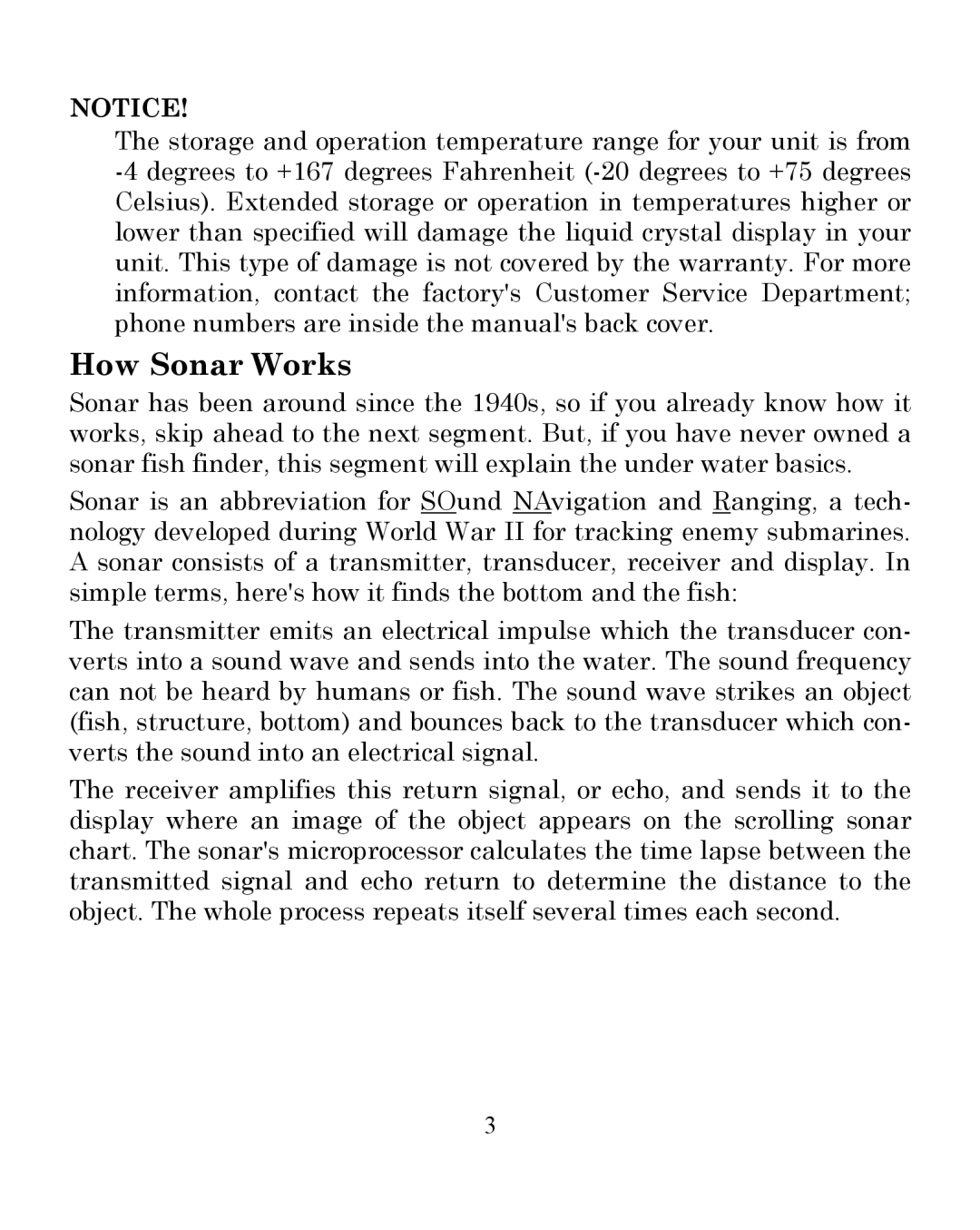NOTICE!
The storage and operation temperature range for your unit is from
How Sonar Works
Sonar has been around since the 1940s, so if you already know how it works, skip ahead to the next segment. But, if you have never owned a sonar fish finder, this segment will explain the under water basics.
Sonar is an abbreviation for SOund NAvigation and Ranging, a tech- nology developed during World War II for tracking enemy submarines. A sonar consists of a transmitter, transducer, receiver and display. In simple terms, here's how it finds the bottom and the fish:
The transmitter emits an electrical impulse which the transducer con- verts into a sound wave and sends into the water. The sound frequency can not be heard by humans or fish. The sound wave strikes an object (fish, structure, bottom) and bounces back to the transducer which con- verts the sound into an electrical signal.
The receiver amplifies this return signal, or echo, and sends it to the display where an image of the object appears on the scrolling sonar chart. The sonar's microprocessor calculates the time lapse between the transmitted signal and echo return to determine the distance to the object. The whole process repeats itself several times each second.
3
